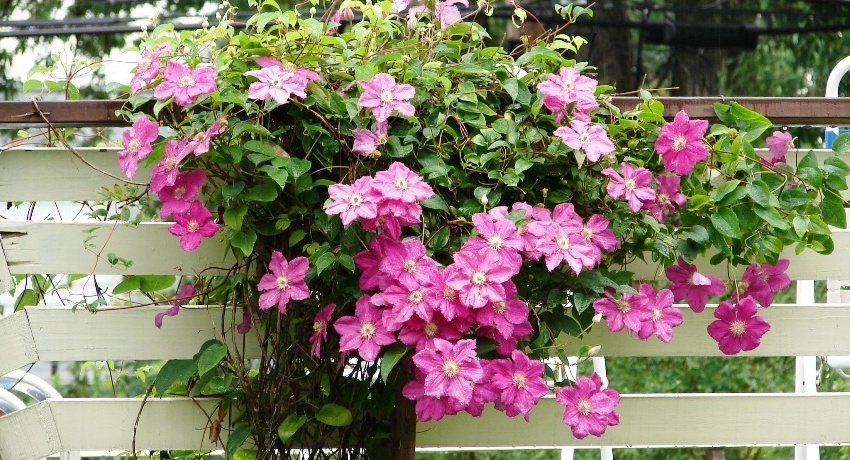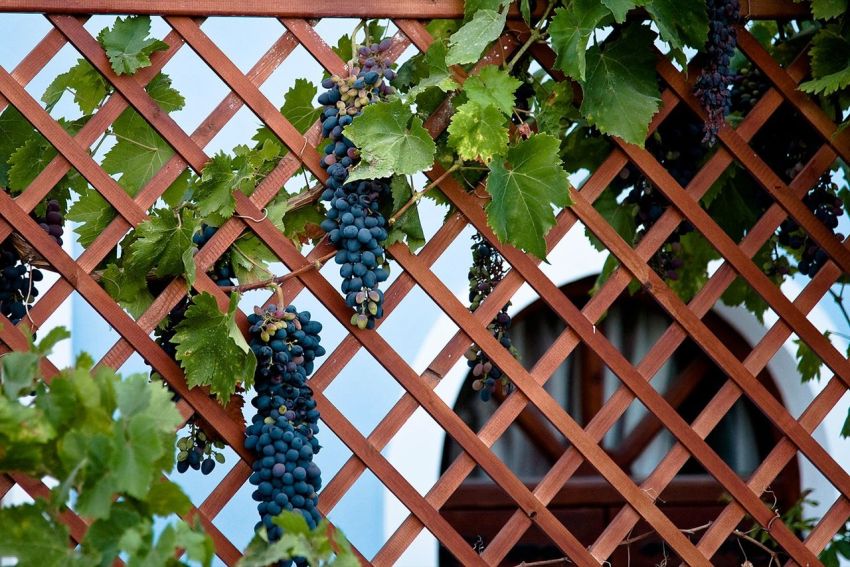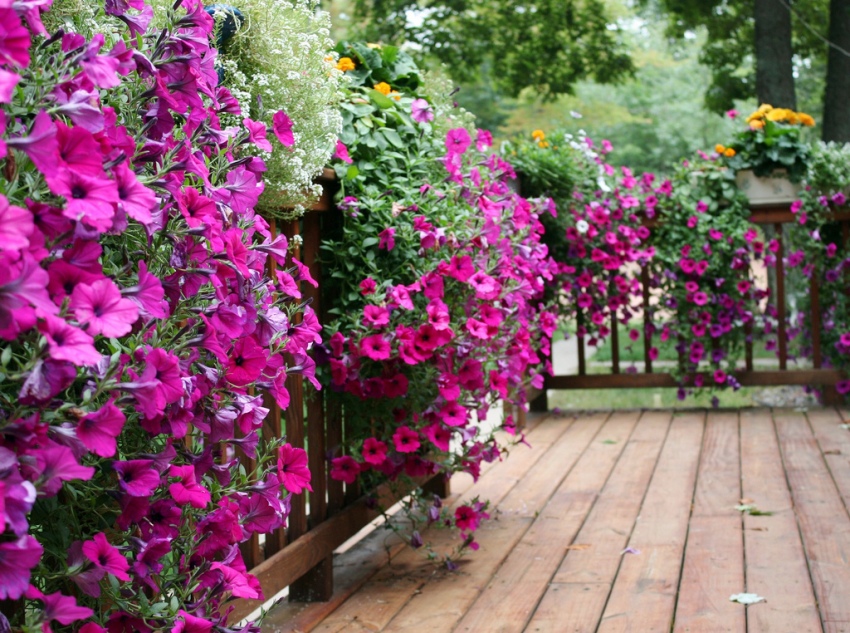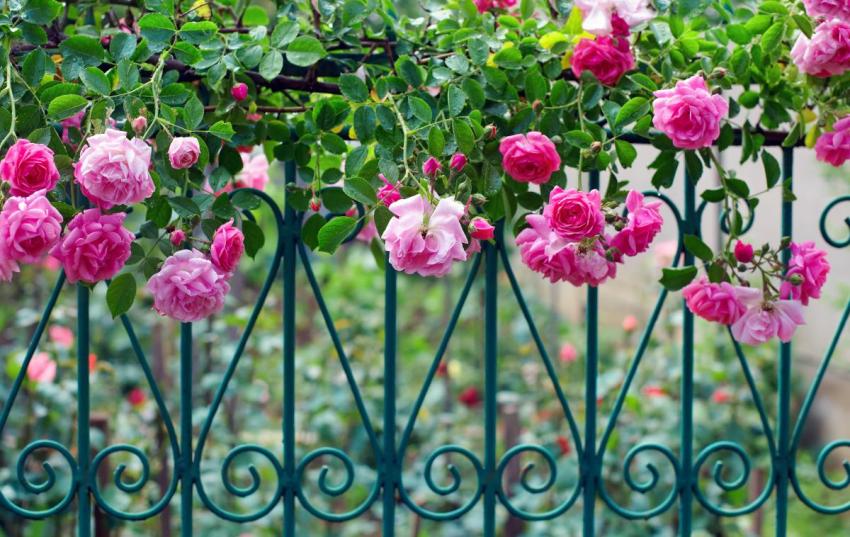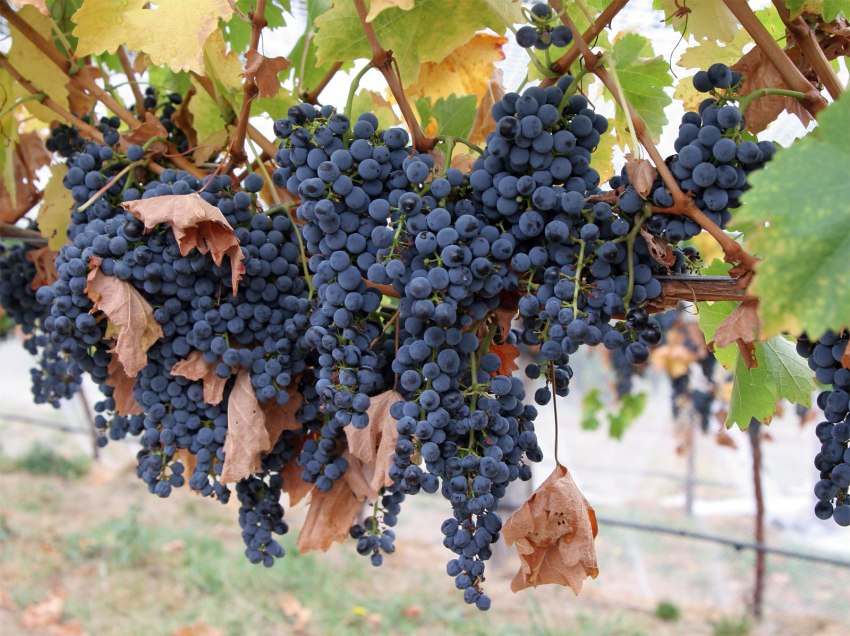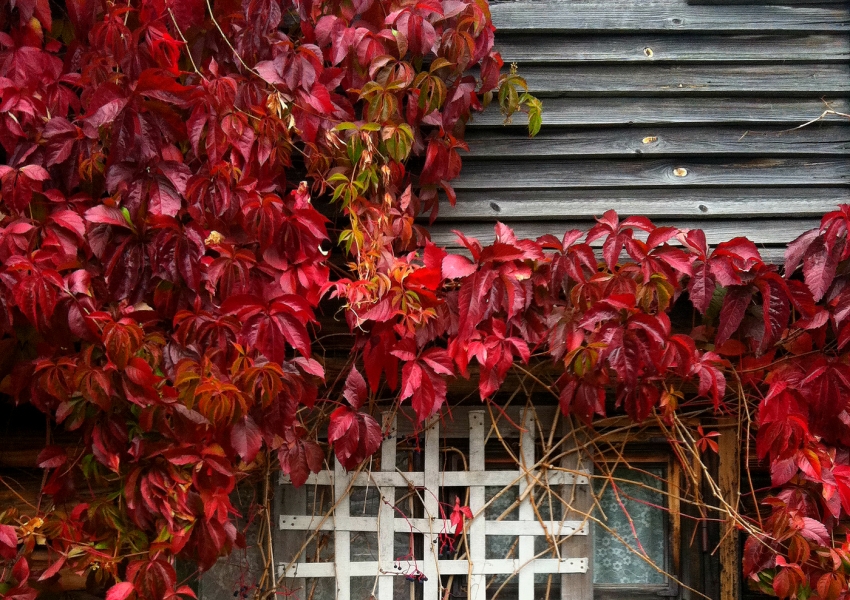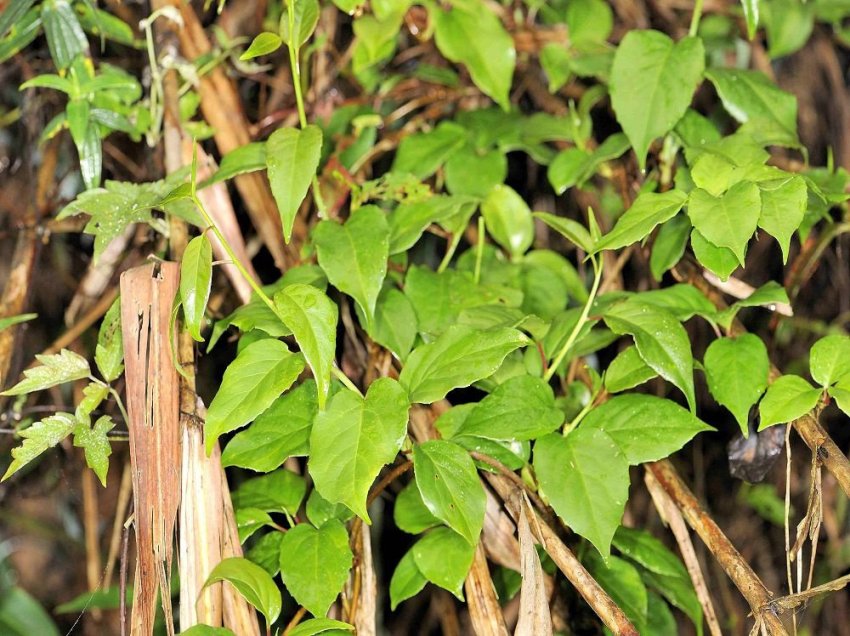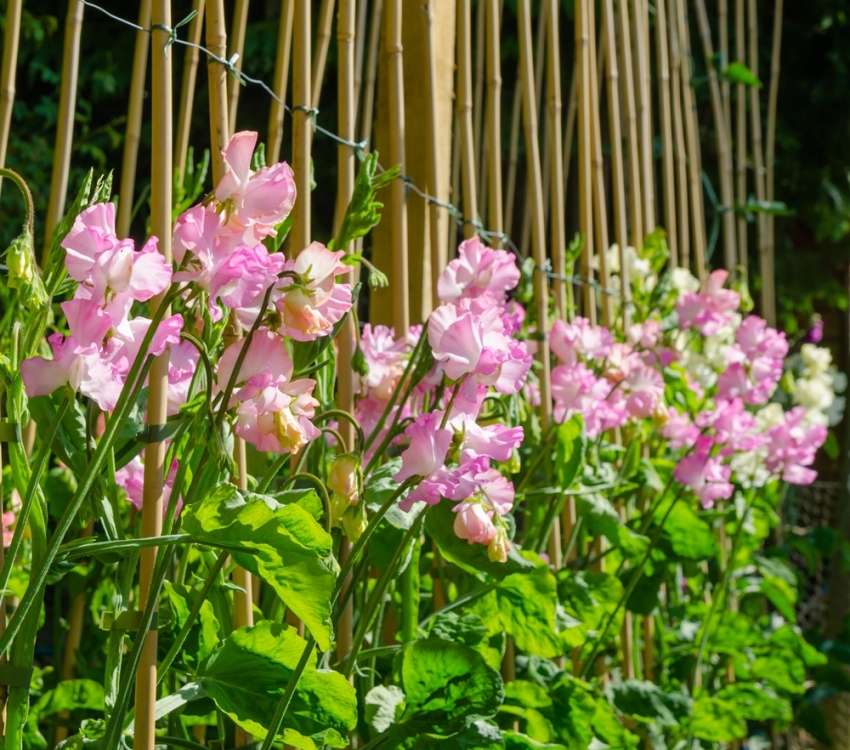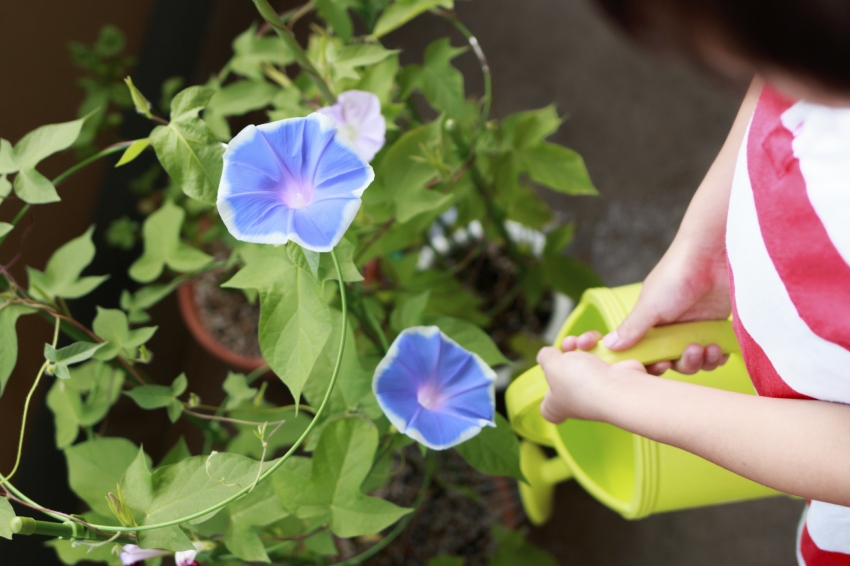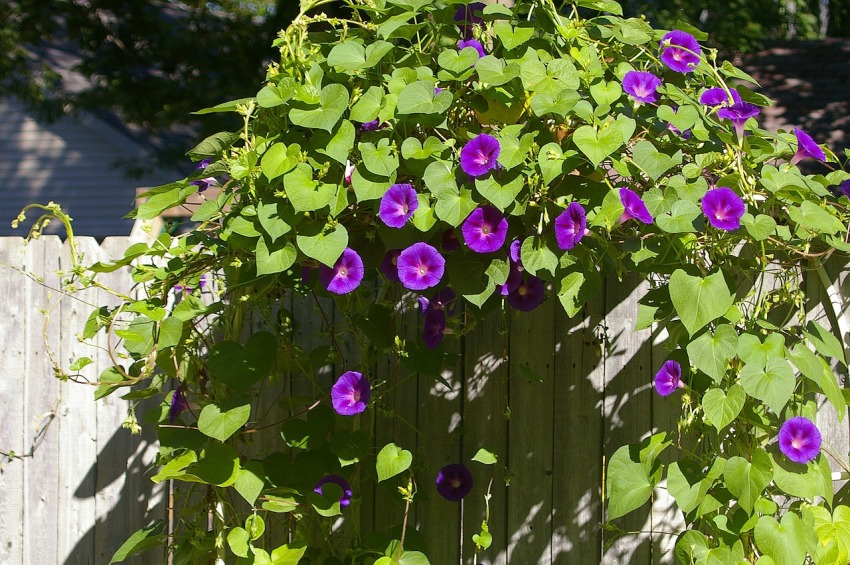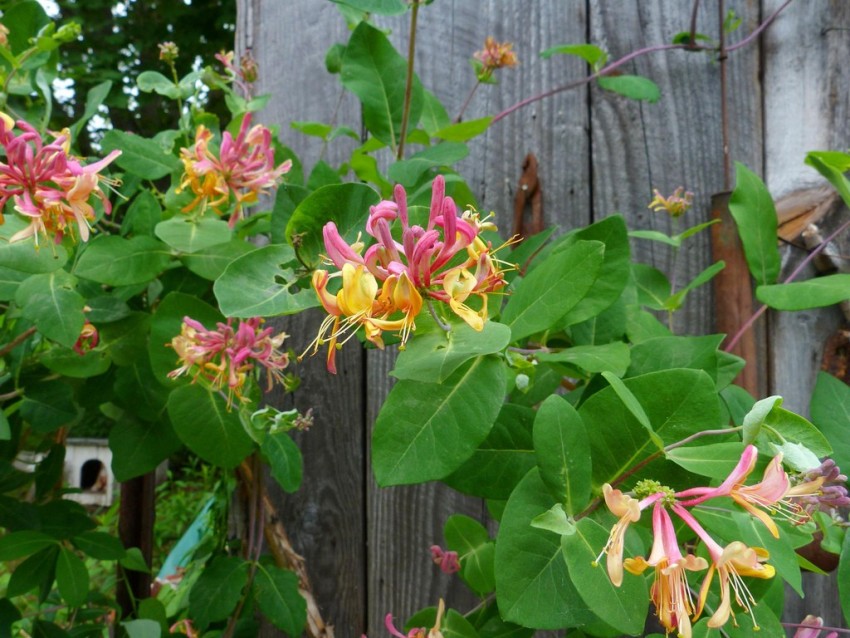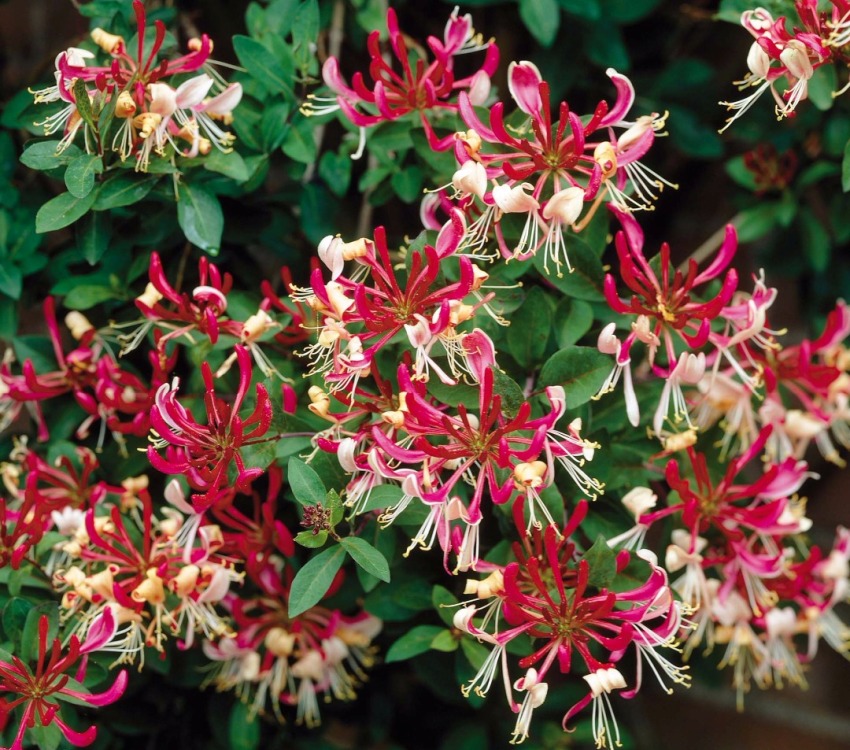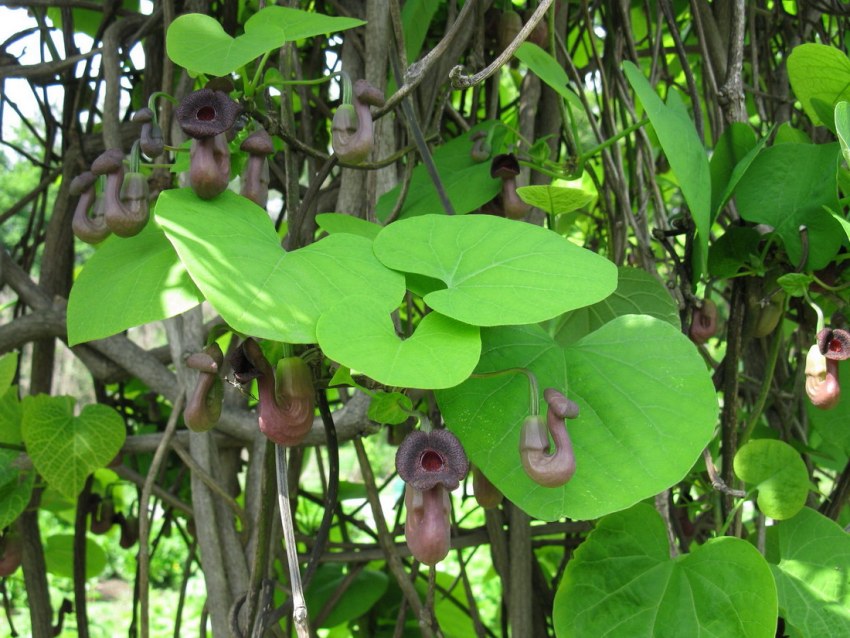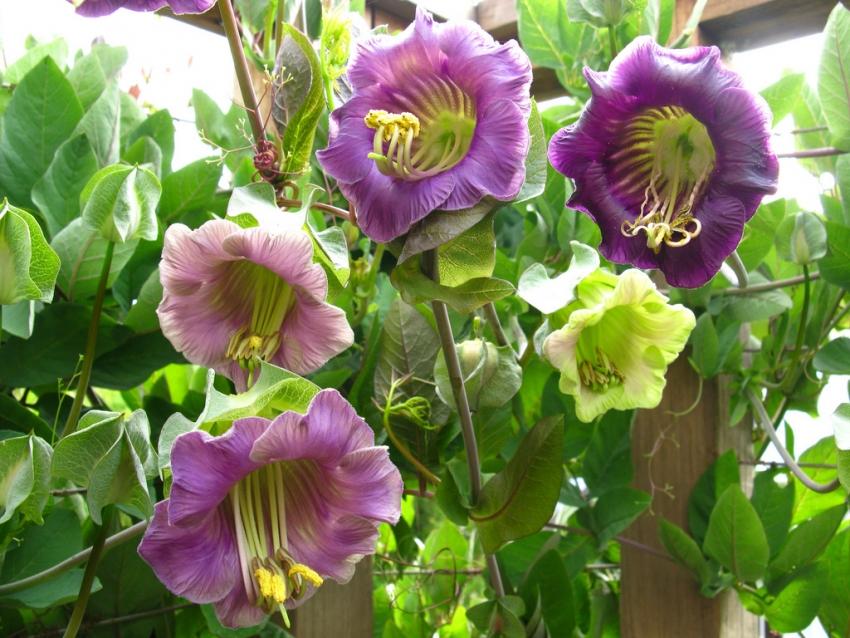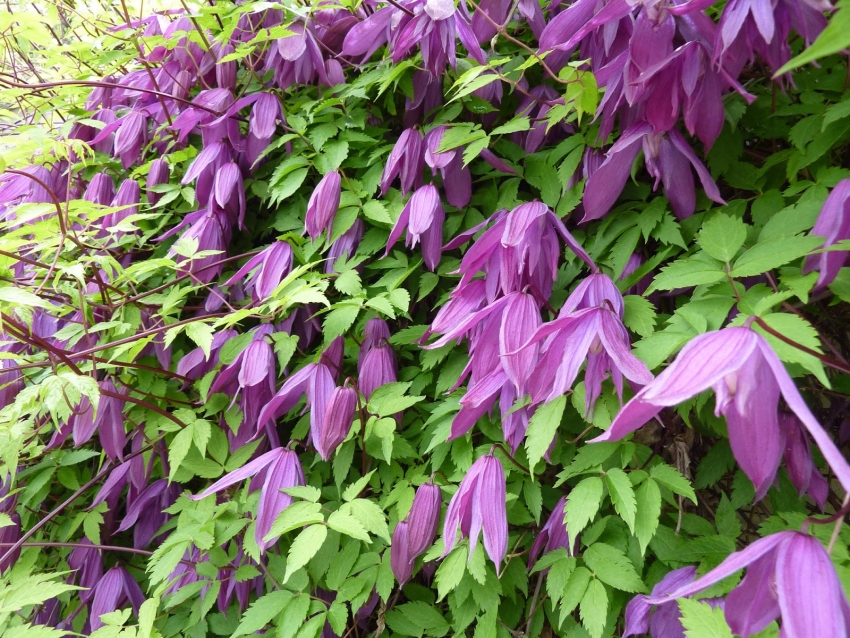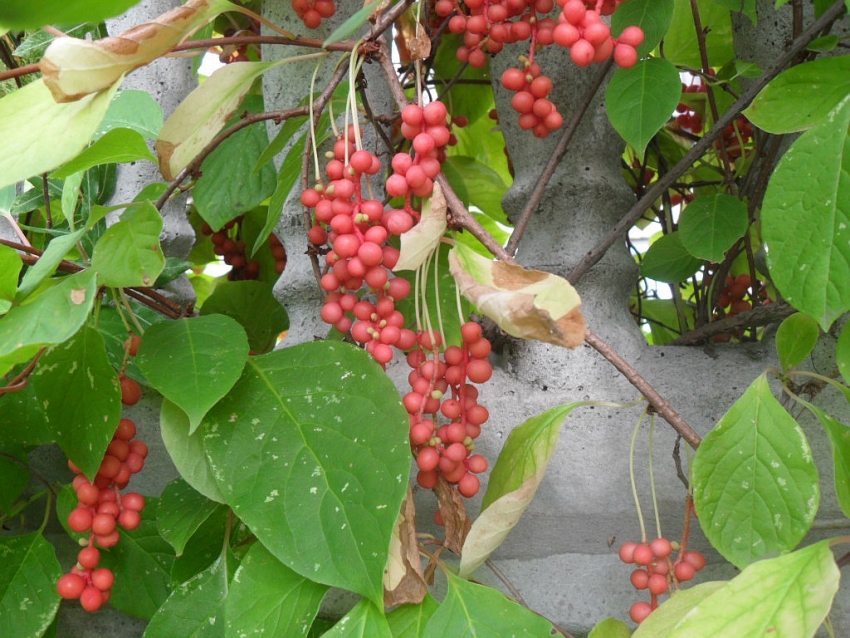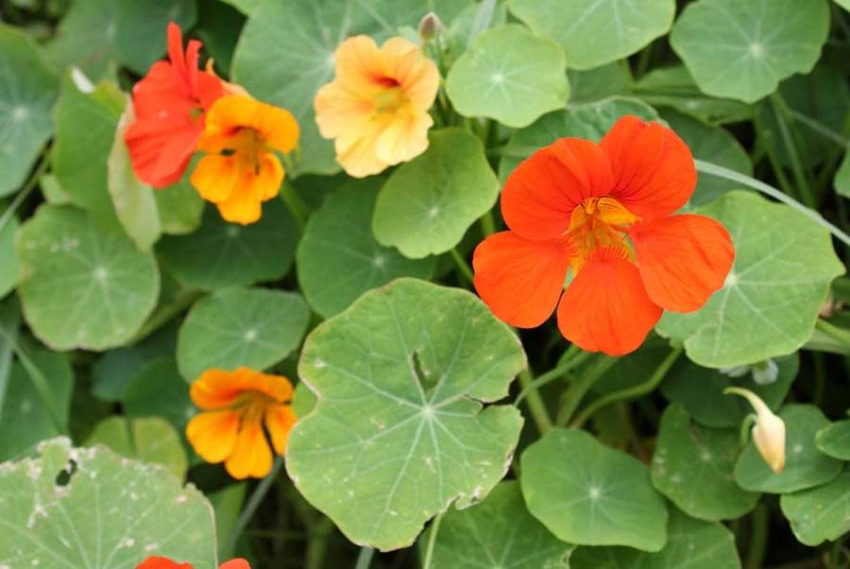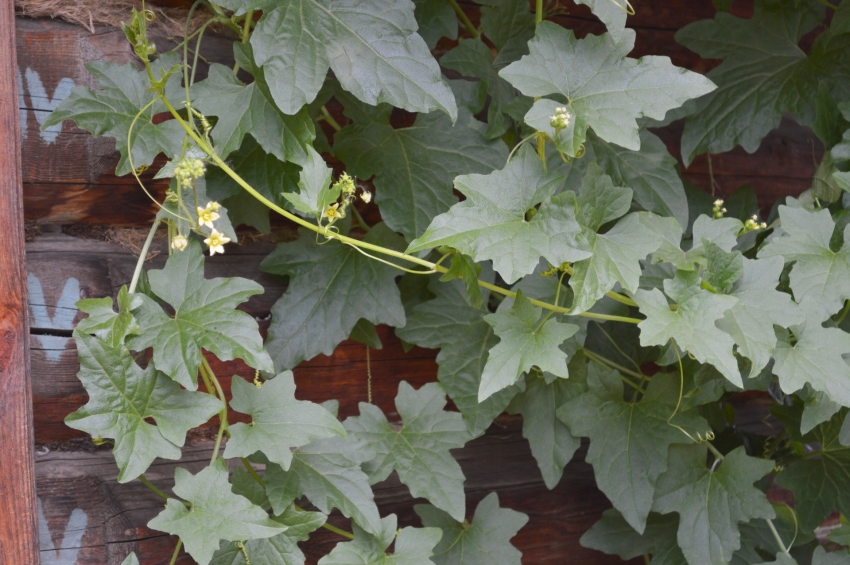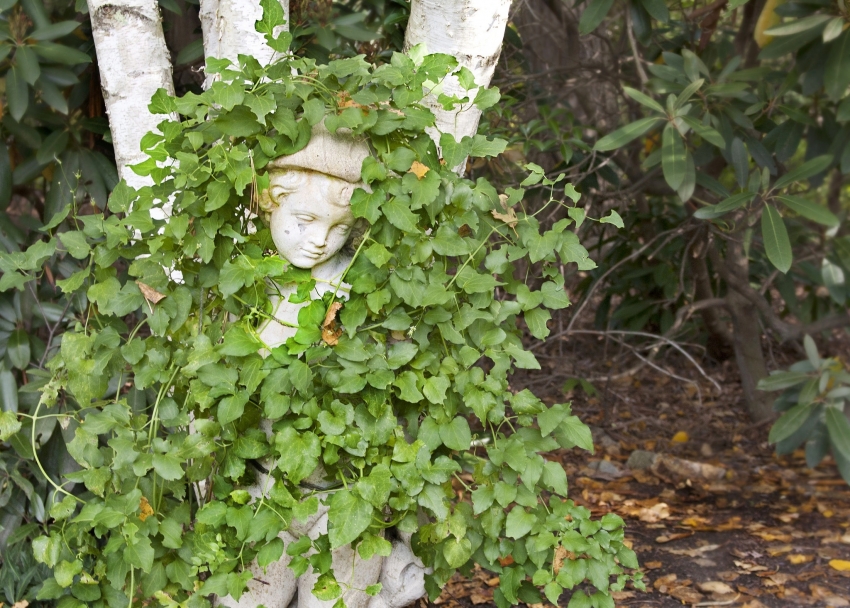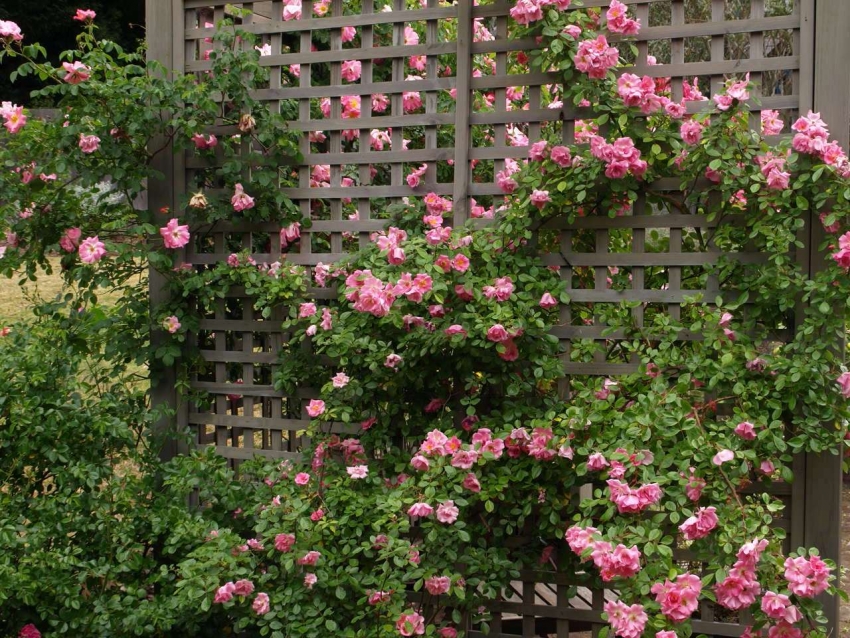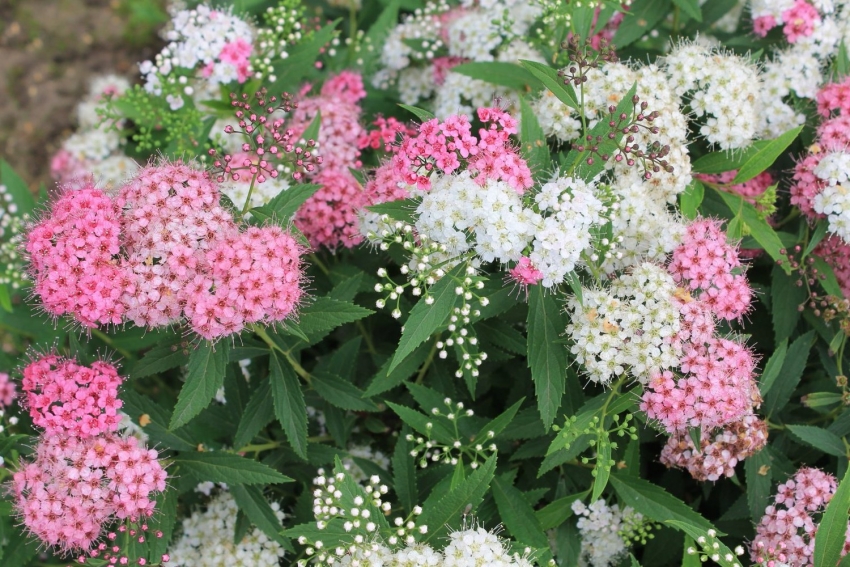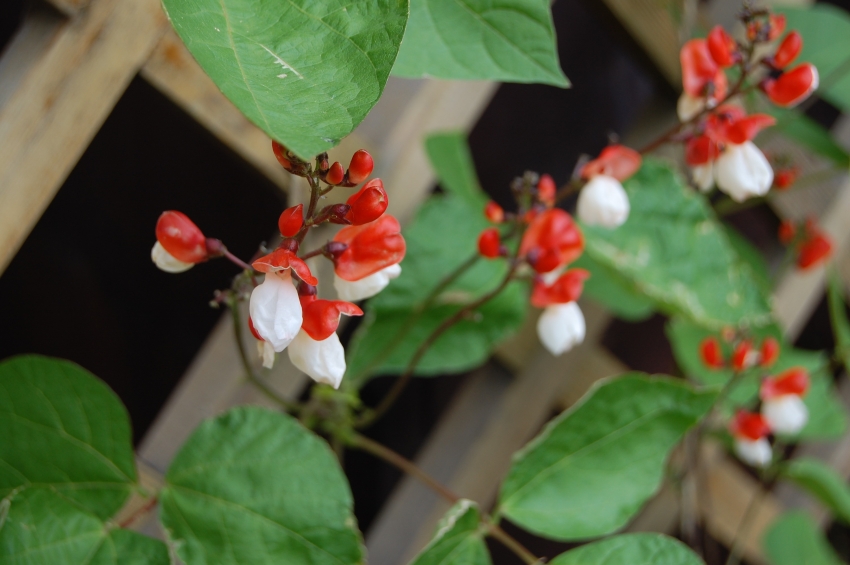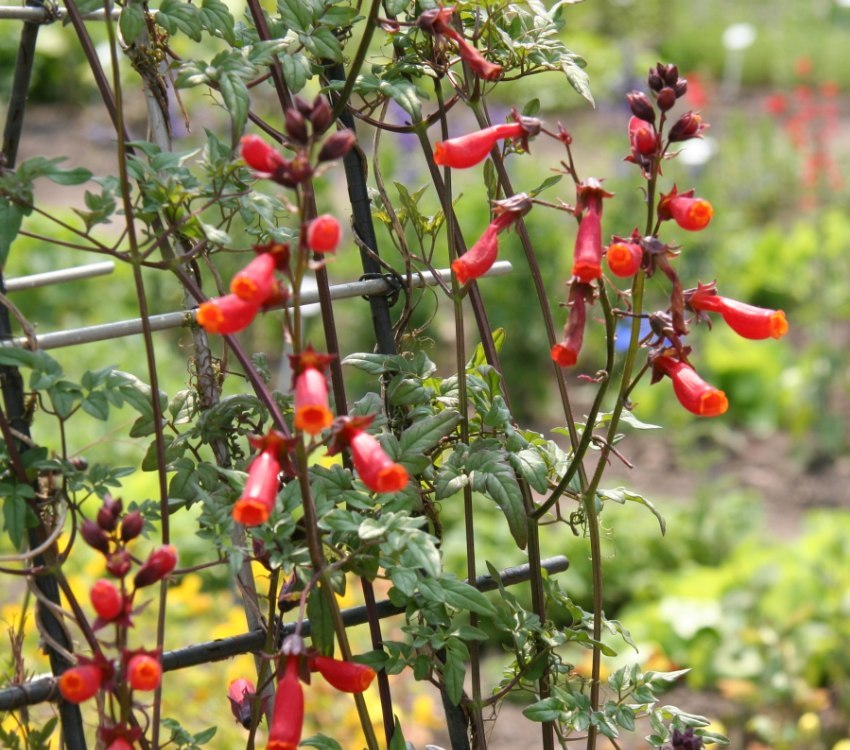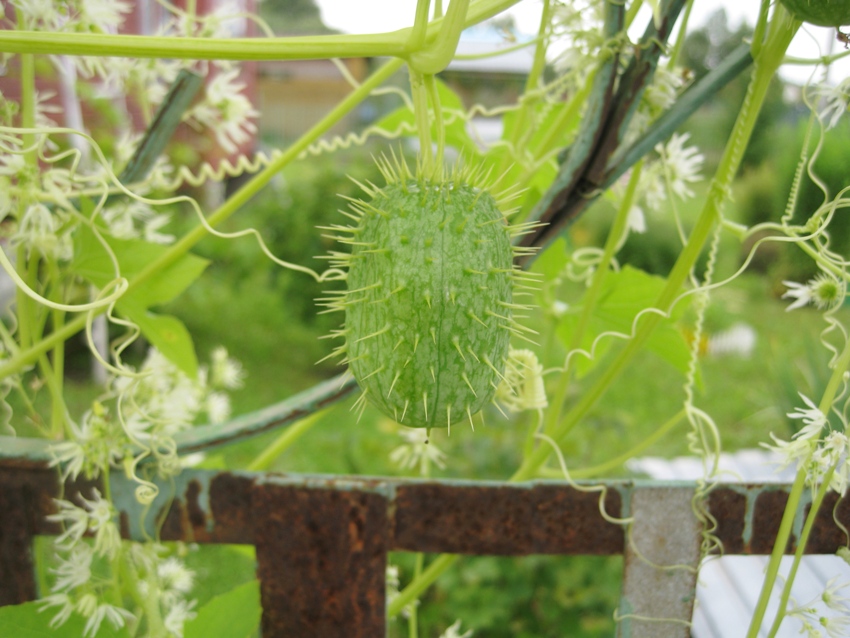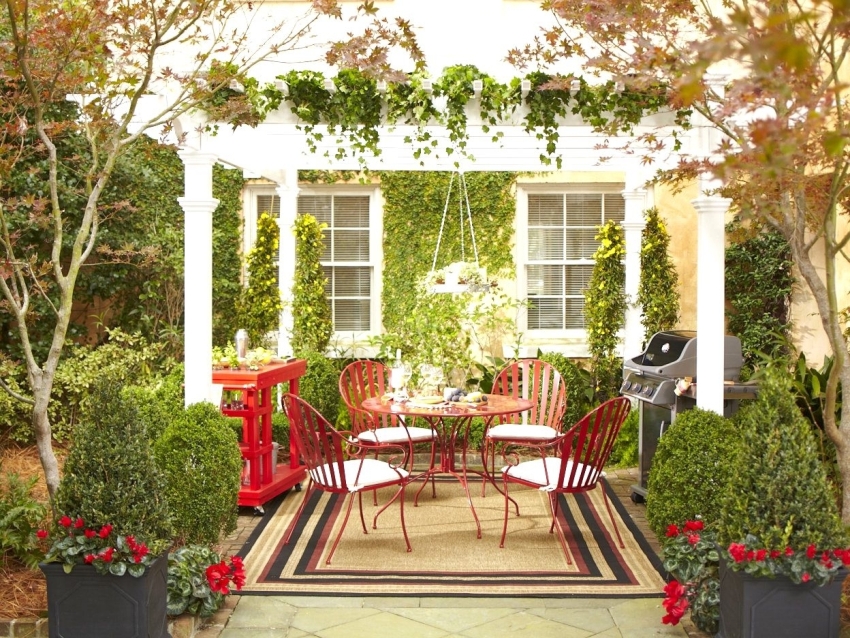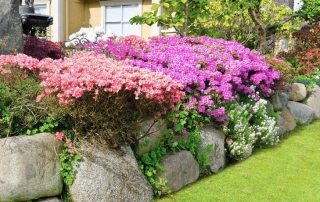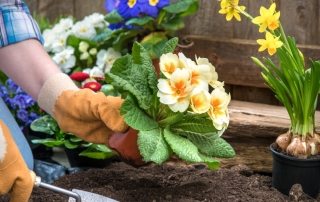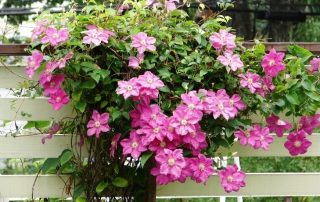For the arrangement of beautiful and modern areas, unusual methods of fencing are often used. One such option is fast growing climbing plants for the fence. Let's consider which plants are most suitable for this purpose, what you should pay attention to when choosing and how to properly care for them so that the hedge has an attractive appearance and fully fulfills its decorative function.
Content
- 1 Fast growing climbing plants for a fence: how to choose the right one
- 2 Fast-growing climbing plants for summer cottages: photos and names
- 2.1 Actinidia: planting and care, features and benefits
- 2.2 Amur breakthrough grapes: the best variety for growing near the fence
- 2.3 Maiden grapes: planting and care, cultivation features
- 2.4 Round-leaved woodworm: how to grow a plant
- 2.5 Sweet pea annual: growing from seed
- 2.6 Morning glory: planting and care, photo of the plant
- 2.7 Ipomoea purple: planting and care, photos and characteristics
- 2.8 Curly honeysuckle (German honeysuckle): features of growing on the site
- 2.9 Honeysuckle: photo of a popular species growing in the garden
- 2.10 Kirkazon liana: exotic shrub for decorating a fence
- 2.11 Clematis: planting and care in the open field, plant features
- 2.12 Kobeya climbing: growing from seeds and care in the open field
- 2.13 Siberian prince: features of cultivation and medicinal properties
- 2.14 Schisandra Chinese: cultivation, care and maintenance rules
- 2.15 Nasturtium: photos and recommendations for plant care
- 2.16 White cross (bryony): how to grow in the garden
- 2.17 Garden ivy: description of varieties and features of each species
- 2.18 Climbing rose: photos of bushes, tips for care and maintenance
- 2.19 Mountain ash spirea: description and features of cultivation
- 2.20 Ornamental beans: unusual types of traditional plants
- 2.21 Ekkremocarpus: how to plant and grow in the garden
- 2.22 Echinocystis: an unpretentious vine for decorating fences
- 3 Perennial climbing plants for the gazebo
Fast growing climbing plants for a fence: how to choose the right one
The easiest way to get a beautiful flowering hedge is to pay for a gardener. However, this will be quite expensive. In addition, many site owners prefer to do everything on their own. For this reason, we will consider what you should pay attention to in the first place so that the result of the work done does not disappoint you.
Before starting planting plants, it is necessary to assess the following parameters:
- features of the climatic conditions of the region and site (altitude of the location, degree of shading, etc.);
- how much time and attention you are willing to devote to caring for plants.Some types require minimal maintenance, while others, on the contrary, require a lot of your efforts;
- aesthetic characteristics. Here you should rely on your own tastes and preferences, having previewed photos of possible options.
A variety of climbing ornamental plants that can be used to decorate a fence will delight even the most demanding owner of a suburban area. Most choose lush plants that grow fairly quickly and bloom profusely. However, in order to find the right option, it is recommended to consider the entire possible range of curly flowers.
Climbing perennials: the most popular options
Perennial climbing plants are a very convenient and fairly common option for decorating fences, since predominantly young shoots require special care. In the future, when the seedlings get stronger, they will need minimal care, which will significantly save time and effort.
When speaking about the care of perennial vines, pruning and shaping are most often implied. However, in the early stages, more careful maintenance will be required, which includes a garter, feeding and regular watering of the plants. In addition, in case of frost, it will be necessary to cover the vines to prevent their death.
The most popular and at the same time easy to care for are such plants as grapes, hops, ivy, as well as large-leaved woodworm. Moreover, it is the grapes that occupy the leading position in this list, since they are not too whimsical to the conditions, and at the same time allows you to refine absolutely any hedge. The only condition necessary for its full growth is fertile soil.
Note! Grape leaves can have a wide variety of hues, depending on the type of soil in which it grows and the amount of sunlight received: from dense green to yellowish and slightly orange.
Another suitable option for masking a fence is ivy. It adheres perfectly to any even the smallest irregularities of the surface, tolerates shade well and almost never freezes.
Ivy and large-leaved woodworm are a little more demanding to care for, however, they also tolerate well any soil. Like all others, they require some care and regular feeding, but otherwise they are quite unpretentious.
Fast-growing climbing plants for summer cottages: photos and names
In addition to the most popular and simple options that were considered, there are still a huge number of plants that are suitable for decorating a hedge. Consider the features of growing each, their characteristics and care needs.
Actinidia: planting and care, features and benefits
Actinidia is a perennial vine with unusual but very beautiful variegated leaves. For full growth and development, the plant requires support, since it itself is quite flexible. Actinidia flowers are usually white and odorless, although some species can give off a rather pleasant scent.
Useful advice! Actinidia can be either male or female. You can determine the sex of a plant by the flowers of the first year of life: male plants have no pistil inside the flower. For this reason, at least two plants must be planted on the site so that they can be pollinated.
Actinidia provides its owners with edible fruits, rich in vitamins and sugars, which can be eaten fresh. In addition, they can be dried, jams and drinks made from them.
Planting actinidia is carried out in spring or autumn, taking into account the fact that its fruits require sunlight to ripen.The plant does not tolerate the neighborhood with apple trees, which is also worth considering when choosing a place. Care consists in periodic weeding of the soil, top dressing, pruning, as well as watering in case of a lack of natural precipitation.
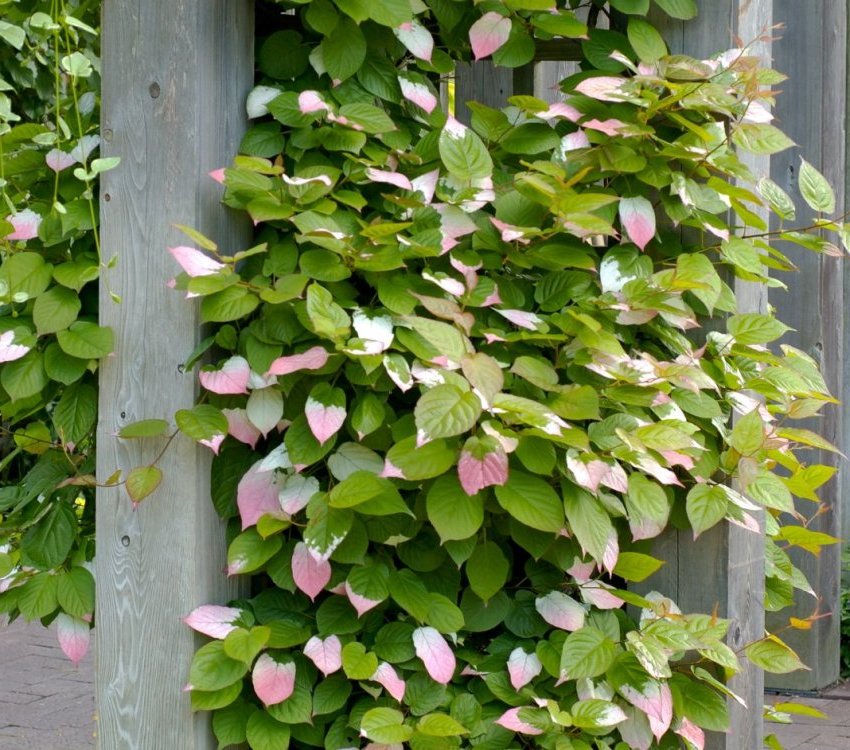
Actinidia can be used to decorate a fence or pergolas
Amur breakthrough grapes: the best variety for growing near the fence
Perhaps the main characteristic of this plant, which largely determines it, is its incredible resistance to frost. Even if the temperature drops to -40 ° C, you won't be afraid of it, so you definitely won't have to worry about its safety in winter.
This grape variety grows extremely quickly and in some cases its lianas can reach a length of 35 m.The trunk thickness can be up to 20 cm.
It is possible to grow the Amur Breakthrough in any soil, but acidic soil is best suited for this purpose. This grape variety is the worst tolerant of limestone-rich soil. The abundance of sunlight has a beneficial effect on the growth of this plant, so it is best to choose a well-lit area for planting.
When planting between plants, it is worth keeping a distance of at least 1.5 m in order to provide freedom and space for further growth. It is best to plant the Amur breakthrough in the form of seedlings or cuttings, but some summer residents prefer to grow grapes from seeds.
Useful advice! In the case of self-cultivation of grapes Amur breakthrough from the seed, it is worthwhile to understand that as a result you can get the most unexpected result, and the taste of the fruit can differ significantly from the usual one.
Maiden grapes: planting and care, cultivation features
The scientific name for the maiden grape is Parthenocissus, which translates to "virgin ivy". The plant belongs to the grape family and has 19 species. Despite this, in our climatic conditions in the open field, only two species grow: tripointed and five-leafed.
Although the plant is not too demanding on the soil in which it grows, you should not plant it in dry or too depleted soil. Maiden grapes quite easily endure life in the shade, however, in this regard, its leaves can change color, becoming burgundy or yellow. In addition, the presence of sunlight largely determines whether the plant will bloom and bear fruit.
You can plant maiden grapes both in autumn and spring, without worrying that the plant will not take root. The main thing is to water it properly. If you plan to plant several seedlings, then you must maintain a distance of at least 1 m between them.
Caring for maiden grapes involves regular sanitary pruning and shaping. For young shoots, it is worthwhile to provide supports for which they can cling to for further growth.
Round-leaved woodworm: how to grow a plant
Round-leaved woodworm is the most resistant plant of all 30 species of this genus. Most of them are represented by vines, some of which are evergreen, but sometimes shrubs are also found.
The height of the lianas of the woodworm can reach 12-18 m, despite the fact that the plant has a high growth rate and can add from 1 to 2 meters in one season. For full-fledged growth, the plant requires supports to which the shoots can cling, therefore it is often used to mask fences and fences. Although it is worth noting that in the absence of support, the plant can creep along the ground.
Like maiden grapes, woodworm can be planted in spring or autumn, but it is better to choose an open, sunny place for this. Watering the plant is necessary only at a young age. The rest of the time, it is quite resistant to lack of moisture and tolerates drought well.But sanitary pruning is best done in early spring, before sap flow begins.
Sweet pea annual: growing from seed
The annual sweet pea is a fast-growing vine that belongs to the legume family. This plant reproduces exclusively by seeds and reaches a height of 2 m in an adult state.
Thin stalks of peas grow, clinging to any supports that come across in the way. Due to this, it is possible to direct the plant, inviting it to cling to one or another protrusion with its antennae, and thus design a fence or wall of a building. For this purpose, you can find many different varieties of peas, which will differ from each other in color and shape of the flowers.
Note! Sweet pea flowers are very sensitive to temperature changes. A strong decrease in it can cause the vines to not bear fruit.
The popularity of sweet peas among gardeners is largely due to its undemanding living conditions. It is able to survive both in the sun and in the shade. Moreover, it can tolerate frost down to -5 ° C. However, it is best to find a landing site protected from strong winds.
Morning glory: planting and care, photo of the plant
Ipomoea is very popular among gardeners. Planting and care in the open field is not particularly difficult. Lianas, reaching a length of 5 m, are able to hide absolutely any fences and walls, decorating them with stunningly beautiful flowers.
Ipomoea flowers can have a wide variety of colors. You can find red, white, pink, blue, purple, etc. As a rule, flowers open every morning and close only at lunchtime or in the late afternoon, depending on the weather.
Related article:
Perennial fast growing hedge: evergreens and their description
Features of planting and caring for shrubs and trees. What to look for when choosing plants.
There are several types of morning glory, planting and care of which may differ, depending on the specifics of the plant. Each variety has its own requirements for the composition of the soil, most suitable for the full growth of this plant. In addition, it is recommended to land in late May or early June, when the risks of night frosts have already passed.
Perennial morning glory is quite rare. Planting and care in this case is rather difficult, so that such plants are most often used in our climate as annuals.
Ipomoea purple: planting and care, photos and characteristics
Purple morning glory is an annual liana with a pubescent stem. In length, this plant can reach 8 m. Flowers are arranged one by one, have a diameter of about 7 cm and can have a wide variety of colors: from white to red, blue or purple. You can find artificially bred varieties that have variegated or double flowers.
Having decided to plant this plant on their site, many summer residents are interested in the features of planting and care. The annual morning glory of this species originally grew in a tropical climate, and therefore does not tolerate frost. It is for this reason that it is not able to survive the winter and is used exclusively as an annual.
Water the purple morning glory regularly, but not too abundantly, so that stagnation of water in the roots does not form. In addition, the plant can be fed approximately every 2-3 weeks.
Note! An excess of fertilizer can lead to an increase in the number of leaves on the vines, but in this case, morning glory will not bloom. This happens especially often when using nitrogen-containing fertilizers.
Curly honeysuckle (German honeysuckle): features of growing on the site
In nature, you can find more than 250 species of this plant, but not all of them are used by summer residents for decorative purposes. Vertical gardening is possible thanks to long vines, which can reach 5 m and bloom profusely with a wide variety of flowers in shades.
Honeysuckle flowers give off a pleasant smell, which is especially intensified with the onset of the evening. The plant is quite resistant to a wide variety of weather conditions and can grow both in the shade and in windy areas. Also, German honeysuckle is able to tolerate frost, independently recovering from freezing. In August, in place of flowers, dark red fruits begin to ripen, which have an exclusively decorative value and cannot be used for food.
Honeysuckle: photo of a popular species growing in the garden
There are several varieties of this plant, which are actively used in suburban areas as a fast-growing climbing plant. Let's consider the main types:
- honeysuckle fragrant honeysuckle - one of the most common varieties, which, nevertheless, is quite picky about the presence of sunlight, moisture and soil composition;
- Brown's honeysuckle is a liana shrub that is popular for its carrot-red flowers. The flowering period is 3 weeks. Prefers to grow in open sunny areas, does not like drafts and wind;
- Henry's honeysuckle is a relatively small (up to 2.5 m) liana that blooms incredibly beautifully: its bright flowers are collected in inflorescences and have an extremely pleasant aroma. The plant calmly tolerates shade or partial shade;
- honeysuckle Hecroth is a hybrid plant that has a rather long flowering period (from June to September), but does not bear fruit. A distinctive feature of this particular honeysuckle is the bicolor flowers, usually white or yellow on the inside and pink or orange on the outside.
These are not all options, and among a wide selection, each owner will be able to find exactly the option that is most suitable for the existing conditions and will delight the eye with its flowers.
Kirkazon liana: exotic shrub for decorating a fence
Kirkazon or as it is also called "aristolochia" has very unusual, almost exotic flowers, which, nevertheless, may well become a decoration of the site in our climate. With proper care and attention, the plant is quite capable of surviving our harsh winter, although in Brazil, where Aristolochia comes from, it does not have to face such conditions.
Unlike many other climbing plants to which we are accustomed, Kirkazon vines do not bloom immediately, but only from the fifth year. It is better to disembark in the fall or spring, choosing a place protected from the wind and rather shaded. In this case, it is important that the water in the soil does not stagnate.
Maintenance includes regular watering, which will prevent the topsoil from drying out. In addition, on especially hot summer days, it is recommended to additionally spray the plant, as it needs moisture.
In the process of formative pruning, it is necessary to cut off all too long vines that stretch over the support. The same must be done with dried branches. In order for a young plant to overwinter without problems, it is recommended to cover its roots during cold weather.
Clematis: planting and care in the open field, plant features
Clematis is an unpretentious liana that is characterized by abundant flowering and is excellent for decorating fences. Planting is carried out mainly in the spring in shaded areas, since the abundance of sunlight leads to the fading of flowers. It is also desirable that there is no groundwater at the landing site.Often, for this purpose, an artificial mound is created on which a young plant is planted.
Useful advice! Before planting, pay attention to the condition of the clematis roots. If during the inspection you noted excessive dryness of the root system, it is recommended to put the plant in water for 2-3 hours.
During cold weather, the bushes need to be covered to prevent them from freezing and help them survive the winter. In spring, watering should be done about 1 time per week, and in summer, in extreme heat, it can be increased up to 2 times in the same period.
It is important to regularly remove weeds around clematis, as they are able to absorb the moisture it needs. Ideally, the area around it should be planted with lawn grass. In the first year, the plant is not fertilized at all, and then this procedure can be carried out in the spring, when the vines wake up from hibernation.

Clematis is great for decoration of hedges on a suburban area
Kobeya climbing: growing from seeds and care in the open field
Kobeya is a perennial semi-shrub vine native to the rainforests of North and South America. The plant can reach over 6 m in length, clinging to a variety of supports. The flowers are quite large and reach a diameter of 8 cm. Depending on the variety, they can be white or purple in color.
Rapid growth rates require a large amount of nutrients and, accordingly, their high content in the soil. In the conditions of the Russian climate, it is better to choose a warm place, protected from wind and drafts, somewhere near a wall or fence for planting. For full growth, it is important to provide the plant with the necessary amount of sunlight.
The initial formation includes a garter of young shoots to pegs, which can be abandoned in the future, when the plant can independently cling to the protrusions and supports.
In order for the vine to bloom, it is necessary to feed it with fertilizers weekly. Otherwise, the kobei will grow foliage, but never bloom. In the process of feeding, it is necessary to alternate mineral and organic fertilizers.
Siberian prince: features of cultivation and medicinal properties
The Siberian prince is known to many, primarily for its medicinal properties. It is actively used to treat a variety of tumors. However, this plant also has considerable decorative value: it is used to decorate fences and walls of buildings.
The unpretentiousness of these plants is impressive, but if you want to create the most suitable conditions for the growth and development of the prince, it is recommended to give preference to sunny or slightly shaded areas, protected from strong winds.
You can plant princes both in May and in September, but you should be extremely careful, since the plant has very fragile roots that break easily. There are a number of diseases and pests that can harm the seedlings. Among them are slugs, which must be removed by hand. It is recommended to remove damaged branches, and to combat diseases it is necessary to spray with special agents.
Useful advice! Spraying with a solution of karbofos will help you easily get rid of the mealy worm.
Schisandra Chinese: cultivation, care and maintenance rules
Chinese magnolia vine has gained fame as a finicky and capricious plant, which is quite difficult to grow in the garden. In fact, this is not so, and in order for your site to be decorated with unusually beautiful lemongrass flowers, it is enough to observe a few simple conditions and rules that are available to every gardener.
There are three basic principles for growing lemongrass:
- the plant should be exposed to light for at least 8 hours a day, so it is better for it to choose an open area or the southern side of the fence;
- lemongrass reacts negatively to strong and cold winds. This can cause not only his illness or developmental disorder, but even death;
- since it is a climbing plant, it is necessary that there are supports nearby to which it can cling.
After planting, young shoots will also require attention from the owners. This concerns protection from too strong sunlight, regular pruning and crown formation, and garters of new vines. The plant should be watered often and abundantly, but only in the evening or at night, so that the sun does not burn the leaves on which the water gets.
Nasturtium: photos and recommendations for plant care
For the design of fences, tuberous nasturtium is most often used, since it is it that has climbing stems, the length of which can reach 2 m or more. This species blooms for a long time - from June to the end of August.
The procedure for planting nasturtium is standard, and the soil in which the plant can be planted can be almost anything. However, do not fertilize the soil too much, especially with organic fertilizers, as this will definitely not benefit the seedling. Also, make sure the nasturtium gets enough sunlight as it grows.
Useful advice! It is quite possible to grow nasturtium from seeds. When to plant seedlings is not so important. This can be done in April or May. The main thing is that by the time it gets warm, the seedlings are ready to be transplanted into open ground.
Planting and caring for nasturtium does not require too much time and effort. It is enough that the area on which it grows is well lit or, in extreme cases, is in partial shade. For the rest, the plant may well take care of itself on its own. The only thing you can do is to periodically water the young seedlings for the first time.
White cross (bryony): how to grow in the garden
White bryony is a perennial herb from the pumpkin family. It is often planted near a fence to provide vines with the opportunity to cling to it and grow up. In order to grow a cross in the garden, the seeds must be sown in the fall, before winter. This should be done directly in the open ground. In addition, reproduction can occur through self-seeding.
White bryony grows well both in the sun and in the shade, adapting to soils of different composition. For full growth and development, moderate watering will not interfere, which, however, should not be excessive. At the time of cold weather, it is recommended to cover the cross. The plant can be fed: once a month with mineral fertilizers or organic fertilizers during planting or mulching.
Useful advice! The main feature of this plant is that it is poisonous. Absolutely all parts of it are unsafe, so you need to carefully monitor so that children do not come into contact with the plant.
White bryony has medicinal properties and is often used in folk medicine. It is used to treat gout, sciatica, and many other diseases.
Garden ivy: description of varieties and features of each species
Garden ivy is a non-capricious and very beautiful plant, which, if certain conditions are met, can decorate the site with beautiful flowers. The plant grows quietly in any amount of sunlight, so it can be planted both in open areas and in semi-shaded areas.
The main threat to garden ivy is frost. Low temperatures can easily destroy this plant, so at this time, shelter is necessary for it. For the same reason, it is better to land in open ground in the spring, giving ivy the opportunity to get stronger and gain strength.
Useful advice! PFor the first time after planting ivy in open ground, observe its condition. In the first months, growth will not be too active, but it is worth watching so that the plant does not die.
Another threat to garden ivy is diseases that can manifest in various symptoms. For example, leaves can begin to turn yellow and fall off, fade and lose their natural color. In this case, it is important to correctly recognize the cause of the changes occurring and take appropriate measures.
Climbing rose: photos of bushes, tips for care and maintenance
Climbing rose bushes are capable of abundant growth, covering rather large areas with their long vines. But, like all other plants, a rose requires certain conditions of maintenance and attention, so before planting it in the garden, it is recommended that you familiarize yourself with the basic rules of maintenance.
The climbing rose loves sunlight, but in order to avoid burning the foliage, it is recommended to choose a place where it can be in the shade for at least 2 hours a day. The south side of a wall or fence works well for this.
Lack of water is more easily tolerated by a rose than an excessive amount of it. Do not plant seedlings in wetlands where there is stagnant water or groundwater is too close to the surface.
It is best to fertilize a rose by spraying its leaves with a complex fertilizer intended for indoor plants. However, this procedure is not recommended during the flowering period.
Useful advice! In order to provide the bushes with the necessary space for development, the distance from supports or other plants should be at least 50 cm.
Mountain ash spirea: description and features of cultivation
Mountain ash spiraea is an ornamental plant that came to us from the Far East. This is a fast-growing plant, the height of which only rarely exceeds 2 m, however, forming rather dense thickets due to the interlacing of the stems.
The mountain ash-leaved spirea got its name because of the external similarity of the leaves with mountain ash. The flowering period begins in July and lasts about a month. In autumn, the leaves take on yellow or purple hues, so this shrub is a worthy decoration of the garden at any time of the year.
It is better to choose a sunny or semi-shaded place for landing. The plant is undemanding to the soil and is able to survive in a wide range of soil acidity, and even endure temporary flooding. At the same time, it calmly tolerates drought, but reacts gratefully to watering.
Distribution mainly occurs due to root suckers, which, on the one hand, is good, since it allows the plant to grow well in a free area. But at the same time, this requires some control on the part of the owner, if you do not want the bush to occupy more territory than planned.
Ornamental beans: unusual types of traditional plants
Beans have been used as food by humans for centuries. However, experienced gardeners know that besides the traditional varieties, there are also curly ornamental beans. Planting and caring for it is simple, but the result will surely exceed all your expectations, since this uncomplicated plant serves as an excellent decoration for any site.
With the right choice of a landing site and formation, curly branches can reach a length of up to 5 m, climbing towards the sun along the provided supports. Ornamental beans love plenty of sunlight, so shaded areas are poorly suited for growing.
There are several different types of ornamental beans, but they are all fast growing and picky.But the variety of flowers of different varieties can impress even the most experienced gardener. All that remains to be done is to choose and plant the species that you like the most.
Note! The fruits of all species of this plant are also decorative and cannot be used by humans for food.
Ekkremocarpus: how to plant and grow in the garden
Ekkremocarpus is a plant that loves warmth and sunlight very much, however, it requires protection from the wind. Therefore, it is ideal for disembarking from the south side of a wall or fence. Since the plants are relatively small, it is sufficient to maintain a distance of 30 cm between them.
This plant loves moisture, so it is recommended to water it almost daily. Good growth and abundant flowering are only possible if fertilized regularly. Depending on the variety chosen, the flowers can have a different color: from yellow-golden to red and even pink.
Useful advice! Ekkremocarpus does not often get sick, but aphids can harm it. To avoid this, you can spray the plant with soapy water or special products designed to combat leaf-eating insects.
Particular attention should be paid to the fruits of this plant, which appear in August and are somewhat reminiscent of small pepper fruits. If you want to use the seeds for reproduction of ekremocarpus, then the collected fruits must be hung in the room in advance, allowing them to ripen for about a month.
Echinocystis: an unpretentious vine for decorating fences
Echinocystis was once brought from North America as an unusual vine, which today has completely mastered the local climate and is often used by gardeners to decorate fences and walls. The plant does not require special growing conditions, it is quite resistant to drought and calmly tolerates any humidity of the surrounding air.
This plant belongs to the pumpkin family and is popularly called the prickly fruit. To obtain all the necessary nutrients, garden soil and natural precipitation are enough for him, although sometimes he can be fed with mineral fertilizers.
Echinocystis is not susceptible to frost, so you don't have to worry about it if the temperature drops below zero on spring nights. The only problem that you will have to face if you decide to plant this plant in your area is its uncontrolled spread. To avoid this, it is recommended to collect seeds in advance or put covers made of gauze or polyethylene on the fruits.
Perennial climbing plants for the gazebo
Almost all of the plants considered are great not only for decorating fences, but also for gazebos. By planting a climbing plant next to a pergola, you provide it with a support to which it can cling.
In the process of choosing a plant suitable for this purpose, it is very important to pay attention to several factors:
- the location of the gazebo: will there be enough sunlight on the plant, will the water stagnate in the root system, how much the place is blown by the winds, etc.;
- how dense the green wall you want to get. Some plants grow so densely that they practically block out sunlight. Others, on the other hand, have sparsely located leaves;
- annual or perennial. Some of the aforementioned plants can be as old as 30 years old. This should be considered before disembarking. Some gardeners prefer to plant new crops, while others, on the contrary, choose perennial ones.
The range of climbing plants that can be used to decorate fences and gazebos is quite large. Each of the options has its own characteristics and requires different care and growing conditions. But taking into account all the available recommendations, you can choose the most suitable plant and use it to arrange a fence on your site.
